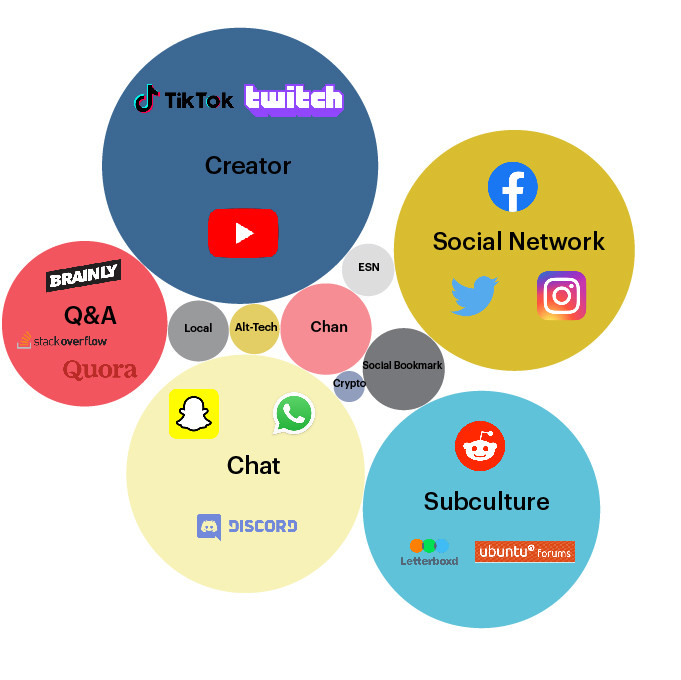Discover What Is Fansly and Why It's Gaining Appeal
Discover What Is Fansly and Why It's Gaining Appeal
Blog Article
How Social Media Operating Systems Have Developed: Examining Their Effect On Communication and Advertising And Marketing Approaches

Early Social Media Site Operatings Systems
It permitted individuals to create profiles, attach with buddies, and share content, laying the foundation for future platforms. Following this, systems like Friendster (2002) and MySpace (2003) gained appeal by introducing more interactive features, making it possible for individuals to personalize accounts, share music, and engage in community building.
These early platforms stressed user-generated content and social networking, growing a feeling of on the internet neighborhood. They showcased the possibility of digital interaction, permitting customers to express themselves and get in touch with others throughout geographical barriers. These websites also dealt with difficulties, such as technological restrictions and the battle to maintain customer engagement.
The early 2000s represented a speculative age for social networks, as designers sought to improve the individual experience and increase capabilities. This duration established the phase for the explosive development of social media that would certainly comply with, eventually changing communication and marketing strategies in unmatched means.
The Rise of Visual Material
As social networks systems developed, a remarkable change took place in the direction of the prestige of aesthetic content, essentially altering customer involvement strategies. This transformation is mainly attributed to the integral human choice for visual stimulations, which can convey messages better than message alone. Systems such as Instagram, Pinterest, and Snapchat have maximized this fad, focusing on photo and video clip sharing to enhance user experience and interaction.

Furthermore, the assimilation of functions like Stories and live streaming has actually made it possible for real-time interaction, enabling brand names to display their offerings dynamically. Analytics tools have actually better empowered marketers to analyze performance metrics associated with aesthetic material, improving their strategies based upon audience choices. Ultimately, the concentrate on visual interaction has redefined exactly how brand names get in touch with their audiences, making it an essential element of modern advertising and marketing strategies in the electronic age.
The Impact of Influencers
Influencers have become critical numbers in the landscape of social media sites, reshaping exactly how brands engage with their target markets and market their products. These people, often considered trendsetters, possess the look at more info ability to reach huge audiences and grow authentic connections with their followers. Their viewed reliability and relatability allow them to communicate brand name messages in a method that reverberates deeply, leading to boosted customer trust and loyalty.
Brands increasingly acknowledge the worth of influencer collaborations, often choosing targeted collaborations that align with their values and goals. This tactical approach allows for customized advertising projects that take advantage of influencers' distinct designs and material layouts. Consequently, brands can effectively take advantage of particular niche markets and foster involvement that conventional marketing approaches typically struggle to accomplish.
Moreover, the performance of influencer advertising is shown by its quantifiable influence on sales and brand understanding. Metrics such as engagement prices, conversion prices, and audience development provide brand names with insights right into campaign performance. As influencers continue to evolve, they will certainly remain indispensable to forming interaction strategies, driving consumer actions, and redefining the advertising landscape within social networks systems.
The Change to Short-Form Video
Current fads in social media have highlighted a significant change in the direction of short-form video clip material, a style that has swiftly captivated audiences and redefined involvement methods. Systems such as TikTok, Instagram Reels, and YouTube Shorts have actually arised as frontrunners in this phenomenon, attracting users in with easily digestible and enjoyable clips. This shift reacts to the lowering interest periods of consumers, that now favor fast, impactful messaging over longer stories.
Marketers have identified the potential of short-form videos to enhance brand exposure and foster link. These bite-sized pieces of content allow brand names to convey their messages succinctly while urging customer communication with shares, likes, and comments. In addition, the imaginative adaptability inherent in short-form video clip-- ranging from narration to tutorials-- gives brand names with diverse opportunities for expression.
Consequently, companies are significantly integrating short-form video clip into their advertising and marketing approaches, commonly leveraging influencers to magnify reach and credibility. This evolution not just advertises higher audience involvement however likewise shows a broader fad in the direction of visual interaction in the electronic landscape. Subsequently, companies must adapt to this vibrant setting to stay relevant and effective in their outreach efforts.
Data Personal Privacy and Individual Trust
How can social networks systems balance customer involvement with the imperative of data privacy? This inquiry has come to be significantly significant as individuals express expanding issues over how their individual details is used. In an era where information violations and personal privacy rumors control headings, systems have to prioritize transparency and user control to foster trust fund.
To accomplish this balance, social media sites platforms need to adopt durable personal privacy policies that articulate information usage and protection actions clearly. Executing attributes that allow navigate here users to tailor their privacy setups can equip people, allowing them to determine what details is shared and with whom. Openness reports more info here detailing information demands and violations can further enhance customer trust fund.
In addition, platforms can leverage moral data techniques in their advertising strategies, concentrating on consent-based advertising models that prioritize customer choices. By employing anonymized data for analytics, systems can still give important insights to marketers without jeopardizing user privacy.
Eventually, the success of social networks systems rests on their capability to grow a trustworthy atmosphere. By focusing on data personal privacy, they can not just improve customer involvement but also position themselves as responsible stewards of customer info in an increasingly data-sensitive landscape.
Verdict
The advancement of social media platforms has substantially changed communication and advertising techniques. The transition from text-based interactions to visual material and short-form video clips has actually improved consumer interaction.
Report this page